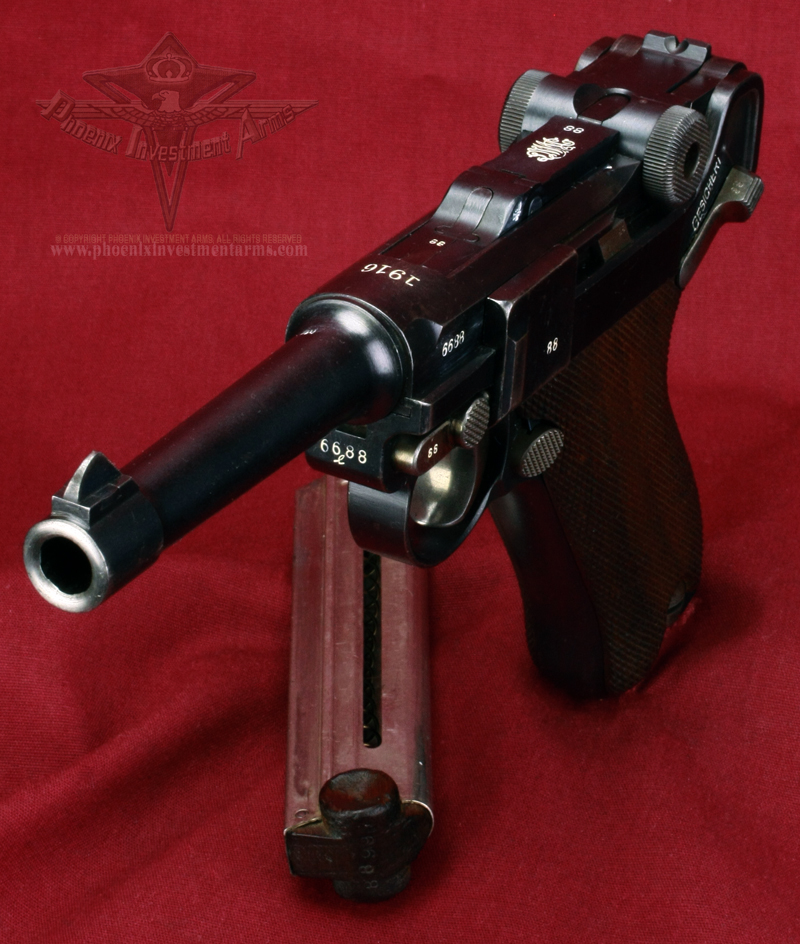Luger Serial Numbers Dwm Shoes
Two of the boats, U-530 and U-548, were directed to operate in Canadian waters, to 'annoy and defy the United States'. The other seven, designated Gruppe Seewolf—U-518, U-546, U-805, U-858, U-880, U-881 and U-1235—were to form a patrol line code-named 'Harke' [Rake] It is believed, however, that in mid-April three of these boats opened sealed orders that would divert them southward on a special mission.

This U-Boat type was designed to be able to operate far from home support facilities. As an example of their endurance, the Type IX boats briefly patrolled off the eastern United States. Some 283 were built from 1937–44. It was not by chance the word 'Wolf' was used in the operation’s designation.

From early in his career and throughout his life Hitler used the pseudonym Wolf. Among the most successful German operational techniques during the war were the 'Wolf-Pack tactics' [known as Rudeltaktik] by which the U-Boats preyed on Atlantic shipping, and the submarines themselves were lauded by the Propaganda Ministry as 'Grey Wolves'. It was typical of Bormann’s meticulous planning that three separate U-Boats of Gruppe Seewolf were assigned to the escape mission to provide alternatives if needed and that the mission was concealed within a conventional Atlantic operation so as not to attract Allied curiosity. The planning for this phase of the escape had begun in 1944, and navy and air force assets across the Reich had been allocated to play contingent parts in the complex and developing escape plan. Ti Nspire Cas License Number Keygen.
The 'pre-production transitional/prototype 1900' US fake - The fundamental problem in exposing fakers - It is very difficult to fault their machining and re-finishing - One of the most interesting Luger patents explained. The DWM commercial production - Part I. - Commercial production 1900-1918 (serial numbers & quantities).
One such part was a misinformation phase. In July 1944, News Agencies reported that Hitler had approved a plan for an imminent attack on New York, with 'robot bombs' launched from submarines in the Atlantic. On 20 August, the Type IXC boat U-1229 [Cdr. Armin Zinke] was attacked and forced to surface off Newfoundland on the Canadian east coast, and among the captured survivors was a German agent, Oskar Mantel.
Under interrogation by the FBI, he revealed that a wave of U-Boats equipped with V-1 flying bombs was being readied to attack the United States. In November 1944, U-1230 landed two agents off the Maine coast; they were spotted coming ashore and arrested. During their interrogation, Erich Gimpel and William Colepaugh [an American defector] corroborated Mantel’s story. This also seemed to be supported by the prediction in a radio broadcast by the Reich armaments minister, Albert Speer, that V-missiles 'would fall on New York by 1 February 1945'. On 10 December 1944, New York’s mayor Fiorello La Guardia broke the story to an astonished American public. On 8 January 1945, Adm. Ingram, commander of the U.S.
Atlantic Fleet, announced that a new wave of U-Boats approaching the United States might be fitted with V-1 rockets to attack the eastern seaboard. The Nazis might launch 'robots from submarine, airplane or surface ship' against targets ranging from Maine to Florida, but the U.S.
Navy was fully prepared to meet the threat. However, the planted misinformation achieved its purpose. It would focus American attention toward any detected pack of U-Boats, such as the majority of Gruppe Seewolf, thus drawing USN and USAAF assets in the Atlantic eastward and northward—away from the latitudes between Spain’s southern territories and Argentina. Central to the Escape Plan was the use of the 'Schnorchel' a combination of air intake and exhaust pipe for a submarine’s Diesel engines, which became widely available from spring 1944. This allowed a U-Boat to cruise [very slowly] on Diesel power a few feet below the surface, while simultaneously recharging the batteries for the electric motors that had to be used for cruising at any depth.
Using the Schnorchel limited a boat’s range to about 100 miles per day; it was normally raised at night, and in daylight hours the boat cruised submerged [again, very slowly] on electric power. Autodesk Universal Keygen X Force 2016 more. While the theoretical ability to remain underwater twenty-four hours a day was a lifesaver for many U-Boats, using the Schnorchel was noisy, difficult, and sometimes dangerous, especially in choppy seas. The low speed it imposed robbed the boats of their tactical flexibility on patrol, and remaining submerged made navigation difficult.